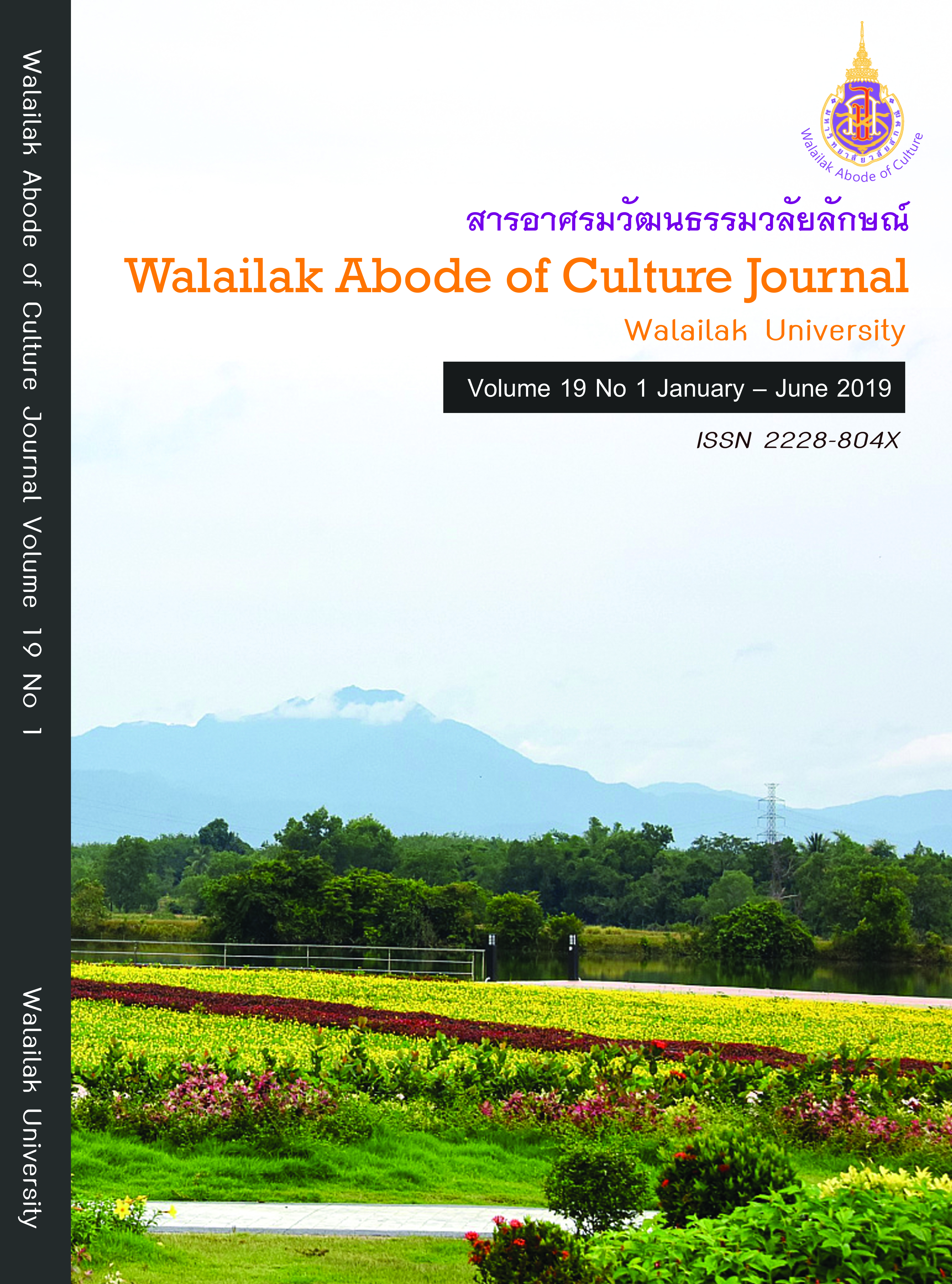The Ritual Baisrisukwan at Ban Kokmuang Prakhon Chai District, Buriram Province: The Reproduction of Cultural Capital for Tourism
Main Article Content
Abstract
The Ritual Baisrisukwan at Ban Kokmuang Prakhon Chai District Buriram Province is the reproduction of cultural capital for tourism by Baisrisukwan activity arrangements for tourists. The senior/elderly people in the village do an alms ceremony with holy thread for tourists who stay overnight at Ban Kokmuang homestay.This Baisrisukwan ritual ceremony is called upon the morale of tourists, by showing them that the tourists are very important people, and sincerely welcomed to this activity, and community. From The Ritual that is called the cultural capital to business as economic capital by Pierre Bourdieu. Ban Kokmuang has been transformed into a symbolic cultural capital by volcano rice, including the use of a mortar to pound rice, and an old traditional Baisrisukwan and Kantoke (dinner) with elderly people of the village to participated Ritual Baisrisukwan ceremony. The repetition was proficiently done to show, and make a natural impression to the tourists. In Habitus of Ritual Baisrisukwan ceremony is created for leaning the elderly people in the village that first time. They didn’t do it properly, and they dare to say it turned out to be blessing, by a facial expression using the eyes, or tone.Bourdieu called it the objectification expression of reproduction of format and content as well meaning of Baisrisukwan ceremony for touists.
Article Details
© 2018 by Asian Journal of Arts and Culture, Walailak University. All rights reserved.
References
Ban Khok Mueang. (2015). The ducument of Ban Khok Mueang. Buriram, Thailand: Ban Khok Mueang Prokronchai.
Bourdieu, P. (1990). The logic of practice. Stanford, UK: Stanford University Press.
Chantavanich, S. (2009). Sociological theories (4th ed.).Bangkok, Thailand: Chulalongkorn University.
Chareonwongsak, K. (2016). Thailand 4.0 with cultural capital. Bangkok, Thailand: Bangkokbiznews.
Ministry of Culture. (2015). Muang Tam Sanctuary Buriram. Retrieved from https://www.m-culture.go.th/young/ewt_news.php?nid=466
Moolsin, W. (2013). Postmodern. Ubonratchatani, Thailand: Yongsawat InterGroup Printing.
National Culture Act, B.E. (1942). Retrieved from https://www.m-culture.go.th/young/ ewt_news.php?nid=466
Sarot, S. (2014). The development of reinforcement community economy’s model of cultural capital: A case of raft house settlement, Sagaekrang River, Uthai-Thani province. Nakhon Pathom, Thailand: Silpakorn University.
Sathien-Koses Nakrapatip Foundation. (1973). Art and traditions. Bangkok, Thailand: Bannakran Printing.
Yanyongkasemsuk, R. (2007). Elites in contemporary Thai politics: A study of Pierre Bourdieu’s approach of reproduction of cultural capitalism. (Ph.D. Thesis, Chulalongkorn University, Thailand).


